An Insider’s Tour of New York’s Disappearing Magic History
Peek behind the curtain of once-magnificent venues and the back rooms where magicians share their secrets.
Fifteen of us are gathered in front of the counter, as Noah Levine pulls the green plastic wand from a bottle of bubble solution. He has urged us all to move in close. Slim and bearded, in a gray blazer that leaves his wrists exposed, Levine is friendly but formal, as if he’s only there to pour a bottle of champagne he’d just opened. He blows gently, raising a flight of bubbles from the wand, and they shimmer and float, rainbow-edged orbs suspended in the still air.
“There’s nothing like your first encounter with magic,” Levine says. He watches the bubbles drift before his eyes and lets them linger until the moment that it seems like there’s nothing more to see. Then he reaches out, and with his long fingers he plucks one from the air. In that instant it becomes an iridescent ball of glass, tangible, inarguable. Holding it still, he lets that sink in for a moment, then drops the ball on the glass counter.
It’s the first trick he’s performed for us, and he turns to the audience with an air of conspiracy: That was amazing, right?
We’re in Tannen’s Magic shop in Midtown Manhattan, after it has closed for the night and the whole building feels empty. Two or three nights a week, Levine hosts a show here in the afterhours, drawing in guests with the promise that, in this quiet, softly lit room, they can get a glimpse inside the closed world of magicians.

Before the show had started, Levine laid out a series of magic books. One was filled with small photos of Tony Slydini, demonstrating card tricks. As I paged through, Levine explained how Slydini, an Italian magician who came to New York in 1930, was a master of close-up magic, obsessed with the psychology that gives the best tricks their impact. He excelled at misdirection.
For the uninitiated, the books were less fascinating, perhaps, than Tannen’s wall of playing cards, their backs displaying more than one hundred bright designs. Or the aging set of specimen drawers filled with silk handkerchiefs, flash paper, sponge donuts, and other small, magical objects. Or the giant elephant, salvaged from a stage set, that dominates one corner of the store. Part of the way through the show, Levine piled the books into a stack and revealed that they contained the secrets for every trick he had and would perform. If we had wanted to, we could have discovered those secrets ourselves. But we had missed our chance. He set the books aside, in the same corner as the mysterious black door that led to Tannen’s back room, where only select magicians are allowed.
Even today, when it’s possible to learn the secrets behind many tricks online, a budding magician needs to make his or her way to a place like Tannen’s to find a community and be initiated into the depths of this art. Spend enough time in magic shops, Levine says, and “you start to realize there are deeper secrets here.” For more than a century, their back rooms have been clubhouses for the most talented prestidigitators, illusionists, and conjurers, legendary sites of innovation and bravado, where insiders such as the great Dai Vernon tried out methods to baffle even the most experienced magicians, and show off subtleties of technique and showmanship that can be appreciated only in intimate settings.
New York was once the center of gravity for some of the world’s greatest magicians, both professional and amateur, some known to the world, some famous only among their own kind. The magnificent venues where they performed and the back rooms where they chewed over the art of wonderment have pulled a very real disappearing act of their own. These places helped shape magic, as spaces for inspiration and communities of purists, wonks, obsessives, perfectionists, and charlatans. Levine had promised to reveal a glimpse of places an outsider might never notice, and I was hoping that, by traveling the city in search of a few of these spots, I would get a peek behind the curtain, into the magical past.

I learned my first trick on the Bowery, as we walked past stores stacked with salt shakers, giant pots, and industrial-sized mixers on a spring morning. “If you need a crazy prop,” Levine said, “these restaurant supply stores are the greatest.”
Levine once spent an afternoon in these shops looking for the perfect cocktail shakers to use in the cups-and-balls trick, in which balls appear where they shouldn’t and vanish just as mysteriously. This trick dates back thousands of years, and its methods are no longer secret. The magician starts with more balls than he shows the audience; one’s already hiding in or underneath a cup, and during the trick, while the audience’s attention is elsewhere, he swiftly secretes the others to spots where they’ll later be revealed. Penn and Teller perform a version with clear plastic cups and explain exactly what they’re doing. Levine had been hired to teach a famous actress to perform the trick for a movie, which was why he needed the shakers.
Even if you know how cups and balls works, in the hands of a skillful performer, you won’t see the movement of the balls, no matter how carefully you look. When Penn and Teller do it in full view it still feels like magic. The same principle applies to New York itself. However many times you walk down a street, paying close attention, some detail escapes your notice, or only exists for those in the know. The grave of Harry Houdini, perhaps the most famous magician in history, is part of a family plot in Queens, and though it might seem like an obvious attraction it spent years in disrepair. I’ve walked past the year-round Halloween costume store on Broadway countless times and never knew of the magic shop in the basement, stocked with throwbacks to the 1980s. Without an invitation, there’s no way to discover the illegal poker room hidden somewhere in Soho, where Levine was once asked to perform. New York itself is an engine of misdirection.
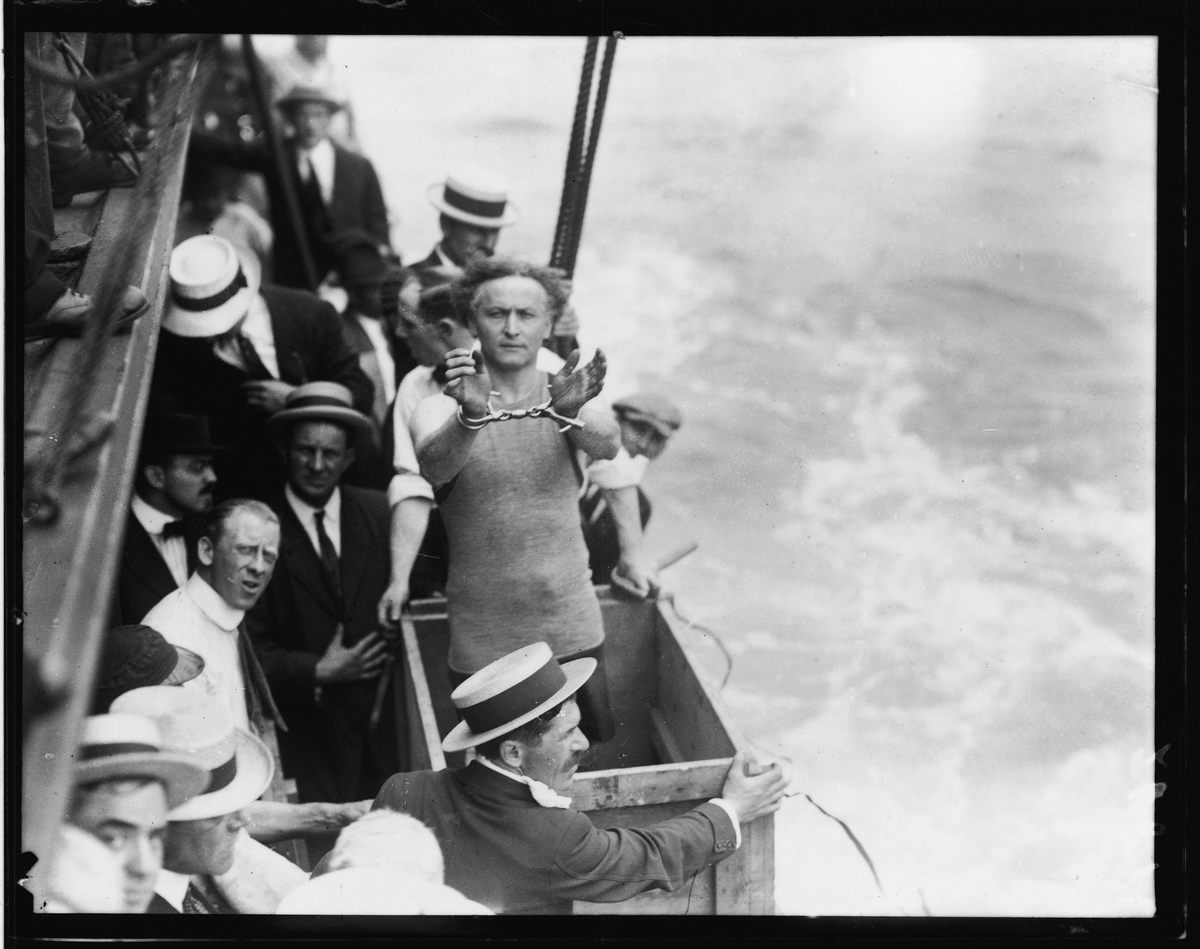
We finally arrived at our first stop, a dark gray building on the Bowery that looks like a converted garage. It seemed unremarkable. But Levine laughed when he saw the poster on the door. “This is a good start!” According to the sign, we were “standing on the former site of Tony Pastor’s Opera House, one of the legendary birthplaces of vaudeville.”
In the 19th century, a gig at Tony Pastor’s could jumpstart a magician’s career. Levine first learned about it in a biography of Houdini, who thought Pastor’s could be his big break. (Pastor’s measured review of Houdini: “Satisfactory and interesting.”) Opened in 1865, the Opera House put on variety shows meant to appeal to families, not just the men who patronized rowdy beer halls and saloons in the area. This was a revolutionary business model, and it transformed the possibilities for magicians who up until then had stuck to pocket tricks and close-up magic—the egg bag, the linking rings, simple card tricks, silk handkerchiefs that change color at a snap—that worked in smaller, less formal spaces. But given a stage and a captive audience, tricks could give way to large-scale illusions. At Pastor’s and theaters like it, objects, animals, and people changed color, swapped places and body parts, floated in the air, and vanished from sight.
“Coming from a tradition where magicians were making jokes and doing sleight-of-hand stuff, making people appear and disappear was a pretty amazing thing. Once you’ve got a nice vaudeville theater, you’ve got options. You can produce a bird and then have someone bring it offstage, so there isn’t a bird flapping all over the place,” Levine said. “It’s not necessarily about method. You’ve got a wing, you can put stuff there. You know what the setting will be like. The more control you have, the more consistent the venue, the better your magic is going to be. In a short period of time, you can really dumbfound people.”
Levine weaves his way casually around the specifics of magic, illuminating without revealing too much. He started to describe a trick called aerial fishing, in which a magician dangles a fishing pole in the air. All of a sudden a goldfish appears at the end. In 1902, Mahatma, a magician’s magazine printed by the magic shop Martinka & Company, noted that the already legendary trick—“the most ingenious trick ever conceived”—was seen for the last time at Tony Pastor’s very popular theater. At one time, performing here was a gig to brag about.

But outside of magician’s magazines, Pastor’s doesn’t mean much anymore. Its original location is occupied by a generic upscale restaurant and a condo building. We walked uptown, tracing Pastor’s moves to a venue on Broadway in 1875, then to 14th Street, a burgeoning theater district in the 1880s. At the site of that last theater, now home to a furniture store, only a small plaque hints at the past. Even with our eyes attuned to the history of magic, we almost missed it amid the distraction.
Vaudeville ushered in a golden age for magicians. They came from around the world to be part of this business, and some found fame touring big cities and regional circuits. Wealthy professionals started learning the art, as a pastime. New magic shops manufactured tricks and magical apparatuses, and welcomed traveling magicians, who could use their back rooms to make repairs or store stage props. On Saturday nights, Martinka’s, the “Palace of Magic” on the edge of Greenwich Village, began to host a small group of professionals and dedicated amateurs to share stories and swap craft. In 1902, they formalized their club into the Society of American Magicians, which counted 24 members at its founding and grew quickly. Long after vaudeville went out of style and its stages were shuttered, this backroom legacy remained.

More than most histories, magic’s is slippery and impermanent. Magicians don’t always write their ideas down. New York’s Conjuring Arts Research Center in Midtown, where Levine used to work, collects rare texts from magic’s past, but many of the stories of people such as Vernon, Al Flosso, and Samuel Hooker—magician’s magicians and stalwarts of the insider community—are passed down as lore.
With his sharp mustache and debonair smile, Dai Vernon always looked like he knew more than he was revealing, and as his stature in the magic community grew, his life became legend. When he came to New York from Ottawa, Canada, in 1915, the vaudeville circuit was still feeding magicians steady income and fame, though Pastor’s heyday was long over. A kid obsessed with magic and card tricks, Vernon gravitated to the city’s magic shops. Martinka’s had already become legendary, though from the outside, one reporter wrote in 1916, it looked like “a little dingy shop … with one window full of dusty paraphernalia,” in the shadow of Sixth Avenue’s elevated train. Whatever wonders the shop had to offer were in the back room, off-limits to newcomers like Vernon.
But the city had other magic shops and other back rooms. When Vernon visited Clyde Powers’s shop on 42nd Street, he made an impression by spotting the technique Powers used in a complicated card trick—it had to do with the number of cards in each small pile cut from a deck. Powers asked what Vernon could do and, after seeing him work, invited him into the back room, the hangout of some of the era’s most famous magicians, Already, the young Vernon had mastered moves the other magicians couldn’t manage.
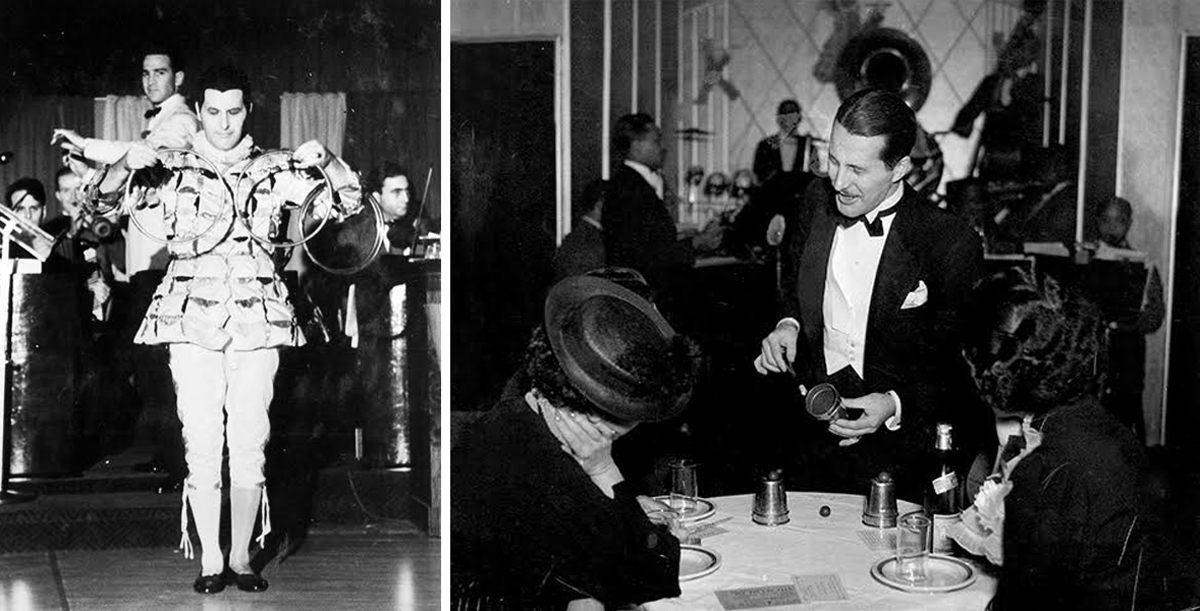
Vernon was supposed to be attending art school, not spending every afternoon in a magic shop. By summer 1916, he needed a job, and he was drawn to Coney Island, where magic and manipulation were core charms. In the amusement parks that had gone up on the city’s sandy edge, magicians created arcane illusions. An audience could see a woman’s head grafted onto a sword or the body of a spider. Dreamland, one of the strip’s most extravagant parks, once had a 30-foot statue of a topless angel at its entrance, advertising a Bible-themed spectacle by the illusionist Roltair.
In 1916, the trains out to Brooklyn’s southern edge had only recently been converted from steam engines to electrified subways, transforming Coney into an escape for masses of Manhattanites. On this sunny Friday in 2018, after visiting the site of Pastor’s theater, getting on the subway at Union Square and taking the long ride to the end of the line still felt like slipping out of the city’s chains. When we arrived at Coney Island around lunchtime, a breeze was blowing, and the tables outside Nathan’s Famous hot dog stand were already crowded. We ambled down the boardwalk, past a man trying to entice recalcitrant bird to sing along to his half-hearted covers. A hundred years earlier, this was “America’s Playground.” “This was a fancy place!” said Levine. “I always kind of think of it as a big carnival, but look at old pictures. You’d get dressed up to go here.”
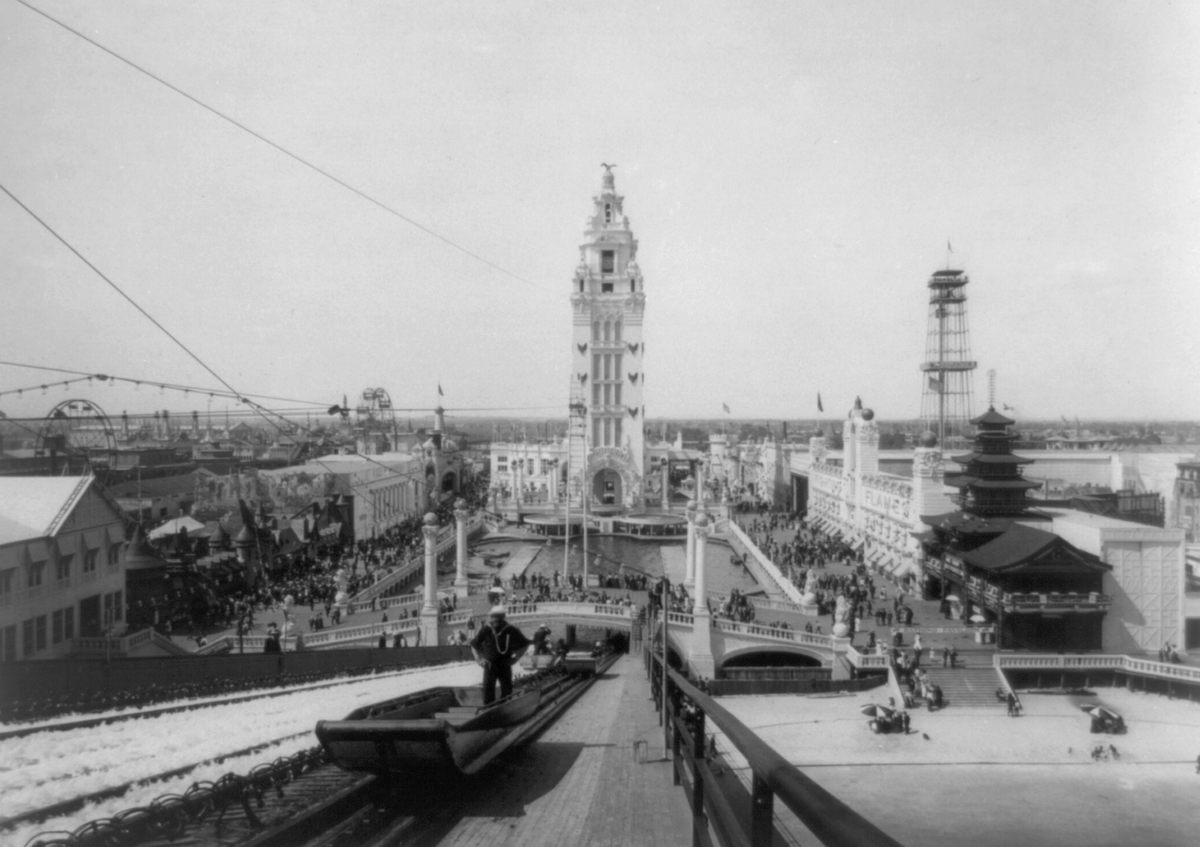
We stopped in front of a dirt lot occupied by construction equipment, next door to an aquarium exhibit featuring animated characters from the movie Ice Age. It’s where, in 1904, you would have seen Dreamland’s palatial central tower soar, an illusion all on its own, as gaudy and spectacular as a Las Vegas casino today, illuminated with thousands of electric bulbs.
Dreamland burned down in 1911, and by the time Vernon arrived, a large tent, the Dreamland Circus Sideshow, had gone up its place. There and at nearby Luna Park, magicians performed show after show, day after day out. Vernon didn’t get a job as a magician, though.

Magicians at Coney had to battle countless other diversions for the attention of the crowds. You can hear Coney Island showmanship in the voice of the Al Flosso, who began working there in 1915. When Flosso started his act, there was no pause in his rat-a-tat pitter-patter, no time for the kids he called “sonny” to lose focus or look away. “When an audience can walk away from you at any moment, you learn to hold their attention transfixed,” Levine said. But Vernon never made magic a full-time hustle. He was already becoming a purist. Rather than slather his subtle powers in ham, he started cutting silhouettes from black paper for passersby. Coney Island was a place to make a buck and meet other magicians.
Earlier, Levine had described what it meant for a magic trick to hit. On some level, people understand that they are watching demonstrations of planning and skill. But it’s also possible to set tricks up in a way that elicits uncontrollable emotional and mental reactions—eyes widening, head tilted in amazement, a gasp of “shut up.” Even the greatest skeptic or insider can be bowled over in ways they can never expect. “It’s almost,” Levine said, “like you’re rewiring someone’s mind.”

When he talks, Levine holds his hands with an unconscious care. Magicians sometimes refer to hands impersonally—“the hands” make a gesture, cards are held at “the fingertips.” They are tools, like a surgeon’s. People watch magicians’ hands closely, and even if they don’t see anything that reveals how a trick was done, they use “sleight of hand” as an explanation, without understanding what that actually means. For magicians, it is a vocabulary of movements—shifts, controls, transfers, ditches, and steals—on which they can build subtle touches, a word, or a way of touching the cards, that make a trick hit. Vernon pushed magicians to use more natural gestures, rather than sweeping, theatrical ones, that could manipulate the minds of the viewers as much as the objects they were moving.
“If I do a little sleight of hand such that the coin that was in my hand is now not in my hand, when I open it, and you didn’t catch it, you think—‘Oh wow, okay, that was a surprise,’” Levine explained. “But if you can get someone to a place where they viscerally feel that there’s a coin in my hand, deep in the back of their head they feel that it’s there, their brain has locked in on that assumption. Then I open the hand, and it’s like their mind does the magic.”
But people came to Coney Island to see grand illusions, not close-up magic, and today this place traffics in different kinds of larger-than-life thrills: rides, kitschy haunted houses, parades of mermaids. On the day we visited, the roller coasters were running, full of delighted kids, but the maze-like corridors of carnival games, hardly changed over a century, were a ghost town. To the extent there’s magic to be found, it’s at the Coney Island Museum, where magicians perform weekly on a stage on the second floor. Out front, a poster advertises a magic show. But when we peeked inside, there was little evidence of the magic community of old.

Our tour through New York passed from the Lower East Side, where new and old versions of the city sit side-by-side, to Coney Island, a simulacrum of its former self, to Brooklyn Heights, which feels like it hasn’t changed much in the past century. Starting around 1916, small cadres of magicians made their way down Remsen Street, past the same stately brownstones that still stand there, to see something amazing on the second floor of a chemist’s carriage house.
Amateur magicians were always part of the culture of backroom magic, and one of them, Samuel Cox Hooker, created a show so spectacular that for years many magicians had relegated it to the world of myth. Hooker was an imposing, detail-oriented man who, in his day job at a sugar refining company, essentially created the American beet sugar industry. He also collected scientific books and had an interest in photography, as well as an affinity for magic. But among magicians, he’s remembered for creating one of the strangest and most mysterious tricks ever devised: the Hooker Rising Cards.
Behind his Brooklyn home, Hooker had a detached carriage house, where he built a lab on the first floor and a small stage on the second, with room for an audience of 20 or fewer—almost always amateur or professional magicians. The stage was set sparsely, with a few small, round tables. On one of them was a houlette, a small frame that held a single deck of cards, vertically, with the face of the front card exposed to the audience. A chosen card starts to slide up, seemingly of its own accord, from the middle of the deck, gradually revealing its face. In theory, this trick is easy to perform. In its simplest version, the magician uses a hidden finger to push the last card in the deck slowly upward.

Hooker’s show was 90 minutes of rising card variations. He placed a deck in the houlette and a joker would rise, and then bob up and down, evading his grasp. An audience member would name a number, and that number of cards immediately rose from the deck. Hooker would borrow a deck from the audience—surely most of them had decks handy—and place it in the houlette; a selected card would rise. Members of the audience would call out cards, and the cards would rise. The whole deck would rise. Later in the show, Hooker upped the apparent difficulty. He put the houlette under a bell jar or on a book lifted up by three small legs, and he even suspended it from the ceiling on ribbons. He had the joker rise clear out of the deck and into the air. Throughout the performance Hooker would chat with the disembodied head of a toy bear named Miltiades III, who himself moved, floated, and helped Hooker read minds.
The magicians in the audience knew how a trick like this was supposed to work, with a secret string or lever or wheel. But Hooker had them mystified. Over the course of the show, Hooker kept adding conditions—variables—that should have made the trick increasingly impossible to perform. In fact, he called the show “Impossibilities.” No one ever guessed how it was done, and Hooker kept the secret close, training just a few people to perform the act before his death in 1935.
When we reached his address, the house, with a black door and brick front, had a looming presence, though nothing in particular distinguishes it from others on the block. Levine knows magicians who’ve driven past, curious to see the place that so many left baffled, but none have seen inside. So we decided to ring the front doorbell.
To our surprise, one of the current owners of Hooker’s house opened the door and invited us in. She preferred not to give her name, but she said she knows that there once was a magic show there and that Houdini had some connection to the house. She would have led us out back to the carriage house if there were anything to see, she added, but when they moved in a decade ago, whatever apparatus was used for the trick had already been stripped out. In ten years, no one’s come by to ask about it. There’s no magic left but memory.
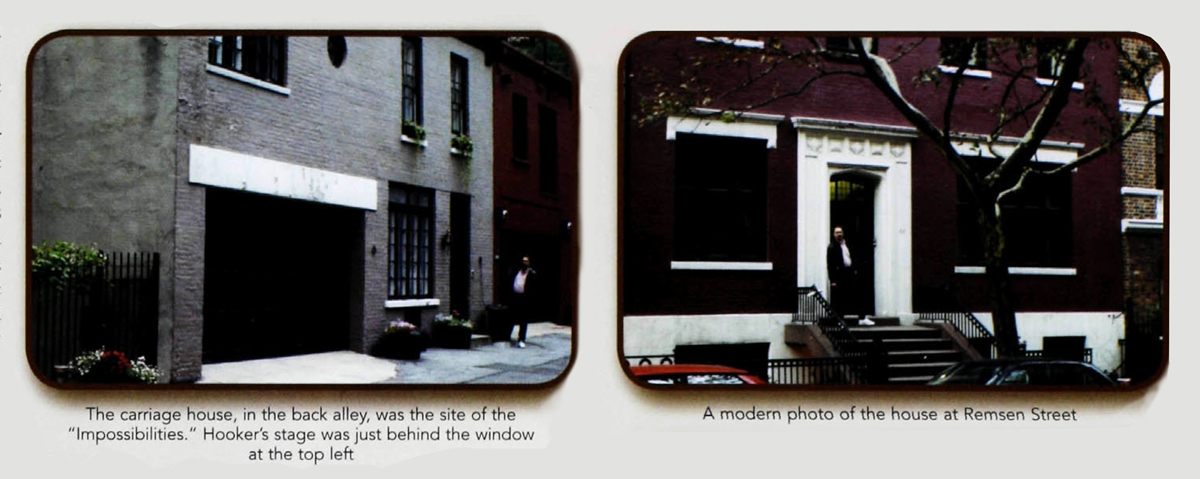
We rounded the corner to skirt down the back alley and take a quick look at the carriage house anyway. (By New York standards, it’s a gigantic space, larger than many decent apartments.) “Houdini got fooled,” said Levine, animated over Hooker’s prowess. “This guy comes up with the most genius magic tricks, and then it’s … ‘Oh yeah, Houdini used to come here.’ He came to be a spectator.”
Most people know only a few magicians by name, and Houdini is often first among them. Some magicians love him, but others see him as a genius self-promoter rather than a talented magician. “Houdini didn’t do any magic,” Vernon once said in an interview. “He did escapes! There’s nothing strange to seeing a guy get out of a straitjacket.”
Vernon wasn’t being entirely fair. Before making his name as an escape artist, Houdini performed card tricks, and he prided himself on his ability to suss out the method behind any card trick if he could see it performed three times. In February 1922, when he was at a magician’s meeting in Chicago, Vernon approached him with a challenge.
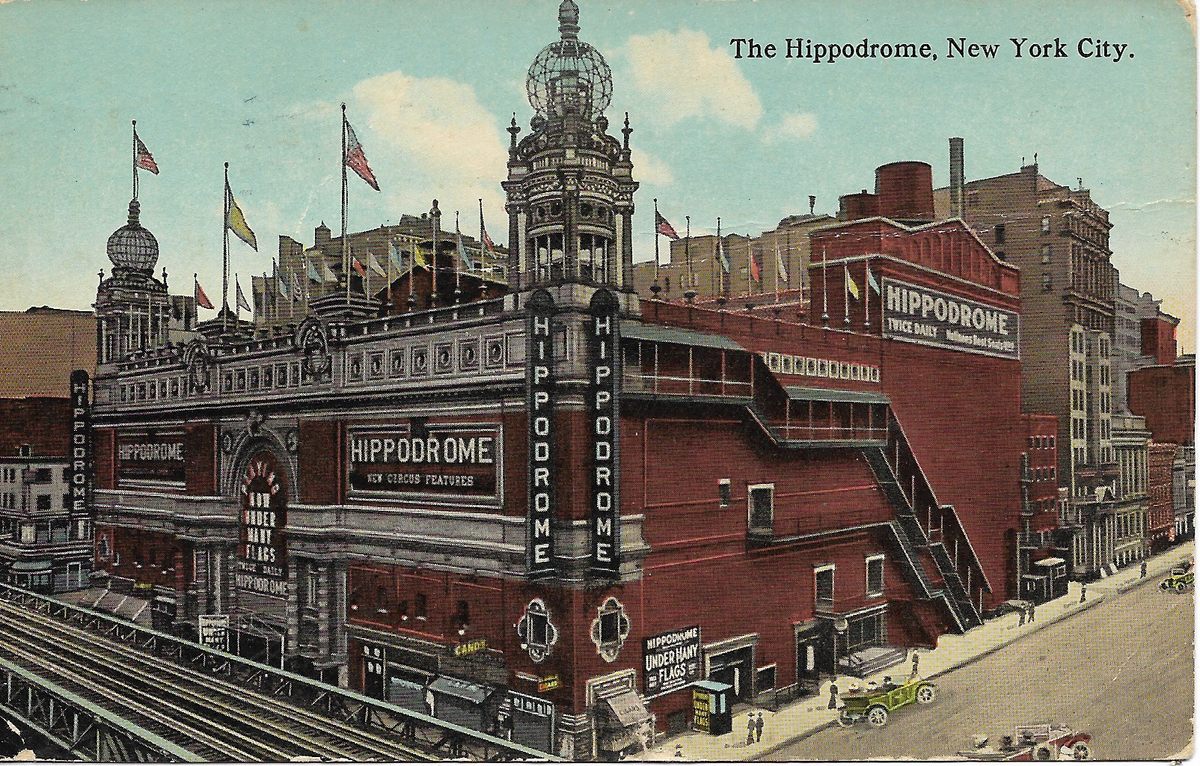
Vernon had Houdini write his initials on a card and place it back in the deck. In a split second, Vernon made the card rise to the top of the pile and revealed it. Houdini had no idea how it happened.
In some versions of this story, Houdini placed the card second from the top. In another, he placed it at various spots within the deck. All versions agree that Vernon performed the trick seven times, and Houdini was stumped. From then on, Vernon piggy-backed on Houdini’s talent for promotion and advertised himself as “The Man Who Fooled Houdini.”
Today, the method behind this trick—a switch, a gesture that exchanges one card for another, or a gaff, a specially made version of an object—is no longer a secret. It’s easy enough to find the details online, although among magicians it’s still considered gauche to talk openly about exactly which switch or which gaff can be used. But the Hooker Rising Cards remain a mystery, even to most magicians, with only a few select people in on the trick. Sometimes, the secret behind a trick is that there isn’t just one secret, but a series of them that a magician can swap out as circumstances dictate. And once you’ve astounded an audience, even one composed entirely of magicians, it becomes easier to keep fooling them.

By the 1930s, Vernon was at the center of his own group of magicians, both professional and amateur, who had come to revere him as the best close-up magician in the world. Along with one of his students, a well-off lawyer named Garrick Spencer, he started his own magic organization, the Academy of the Art of Magic, which planned to assemble the most accomplished magicians into a league of honor. By then, the primary forum for magic had shifted again. Vaudeville had fallen to radio and, eventually, television. The Great Depression had stripped the middle class of money to spend on leisure at places like Coney Island. Soon the Hippodrome, the Midtown theater where Houdini had famously made an elephant vanish, would be torn down and replaced with an office building. Martinka’s had merged with another magic shop, and in 1938 Flosso, the Coney Island magician, bought it and changed the name to the Flosso-Hornmann Magic Shop.
Magicians found refuge in nightclubs, classier versions of the beer halls that had preceded vaudeville. Elaborate illusions were on the outs again, as magicians were often left exposed in the middle of a dance floor, backed by a band. “You were surrounded,” says Levine. “The acts had to be lightweight and attention-grabbing.”
In the late 1930s, Spencer had been urging Vernon to develop an act that he could take to a famous nightclub—the Rainbow Room at Rockefeller Center. Vernon was used to performing in rarified settings; for many years before the Depression he had worked parties for some of New York’s wealthiest people. But he wasn’t a stage magician. With Spencer’s urging (and money) he developed an elaborate routine, his “Harlequin Act,” in which he portrayed a commedia dell’arte character, a medieval demon of sorts. Choreographed to classical music, the routine updated classic tricks—the cups and balls, the linking rings, changing gloves into a dove.
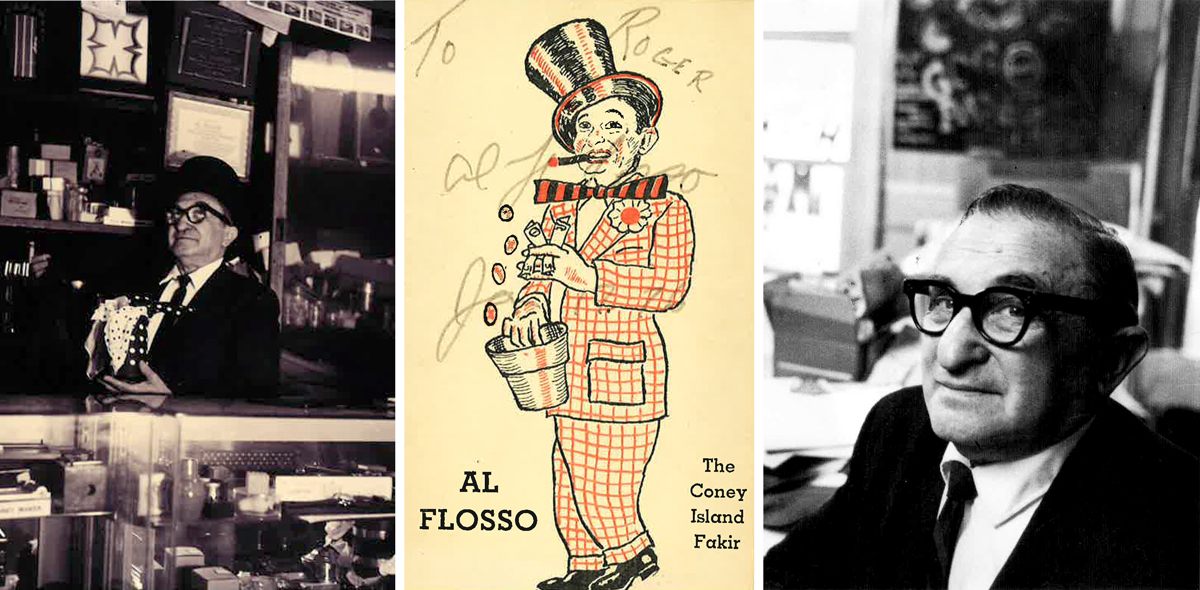
The act premiered in 1938, and at first it was a success. Newspapers hailed Vernon as card master who’d finally figured out how to communicate his genius on a larger scale. A one-week engagement at the Rainbow Room was extended to more than two months.
Unlike Pastor’s theaters, or Dreamland, or Hooker’s private venue, the Rainbow Room still exists, in a form. It’s now an event space, available for rent. Not that long ago, Levine performed there himself at a fundraising gala, where magicians walked the floor, approaching small groups of guests. In that situation, lightweight tricks that can be held in a magician’s hands and pocket work best: Levine might guess a card someone has picked from a deck, or have them think about their favorite book from childhood and divine what it is. The space still has room for more dramatic stage sets, though, and another magician made a person levitate into the air.
But Vernon’s success at new venues was short-lived. When he tried to scale the act up, to perform at Radio City Music Hall, it didn’t work. He was disappointed, but the purist and experimentalist in him was also bored. He didn’t like doing the same show over and over; he felt his own limits as a performer. He was happier tracking down a new sleight-of-hand technique from card shops. Just like in his Coney Island days, he preferred to do magic without muddling it with show business.
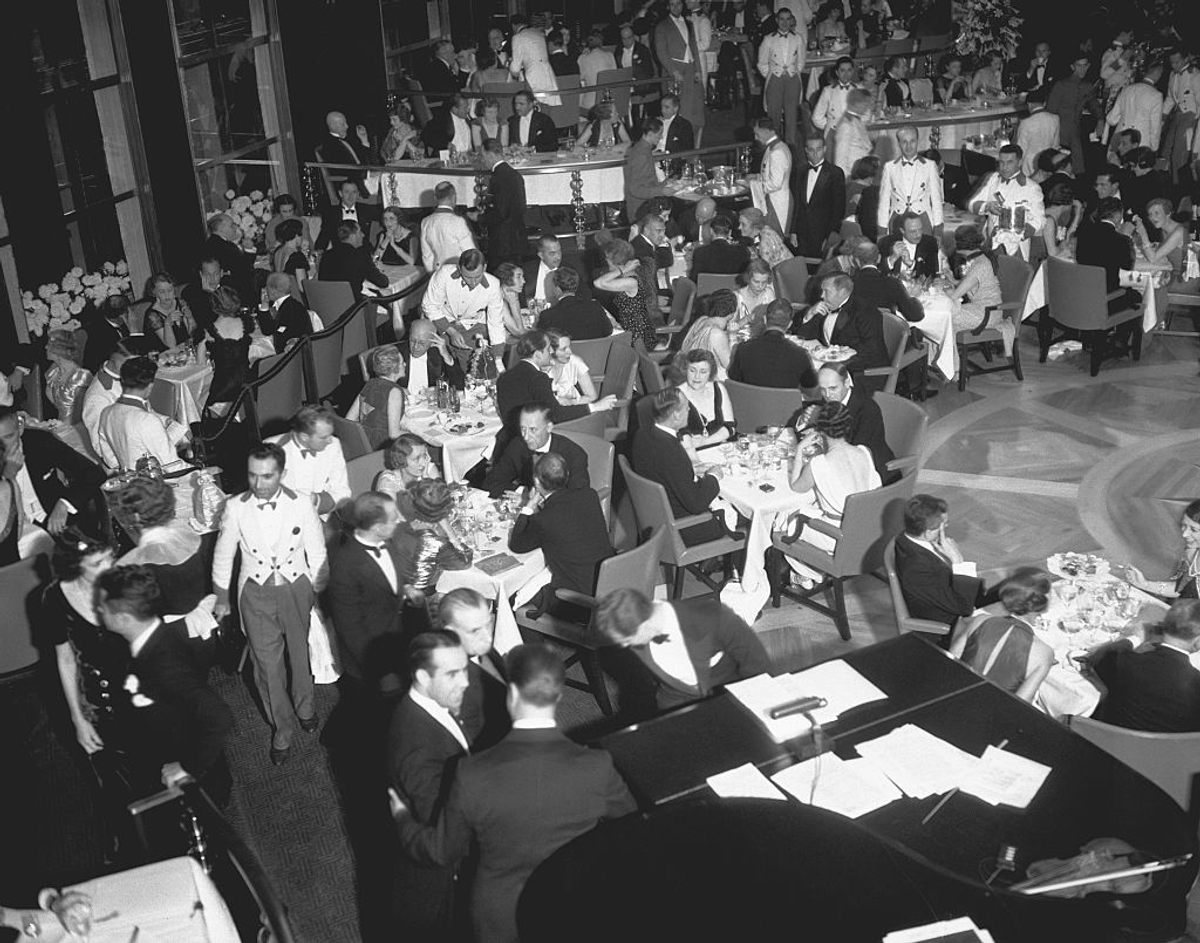
In the 1940s and ’50s, he performed close-up magic on cruise ships and at parties, and he started giving lecturers to other magicians. He shared some of his never-before-seen techniques, and always pressed on the idea that magic should look as natural as possible. He rethought age-old tricks, and the versions he created became canon. “If you see someone do the cups and balls or linking rings or any card trick, most of the time, they’re doing his version,” says Levine. At that time, in New York’s back rooms and the restaurants that magicians haunted, Vernon was the one who determined who had the opportunity to gather around insiders’ tables.
In the 1960s, he moved west, to Los Angeles, where he took up residence at a private magician’s club, the Magic Castle. “When he lived in New York, New York was the epicenter of insider magic,” says Levine. “And when he moved to Los Angeles … ” Vernon took the center of gravity with him.

“All of my memories of magic are—I was already obsessed with it,” Levine says. There’s a video of him at age five, giving a magic show using tricks from a kit. “I didn’t know how to do any of the stuff,” he says. “But I kind of have the schtick down, like—‘You, over there, you pick this card.’”
He met the current owner of Tannen’s, Adam Blumenthal, when both were early teenagers, attending the magic camp the shop still runs each summer. Back then, most people assumed a young magician’s dream was to have a television special like one of David Copperfield’s. “Sleight of hand was just a thing magicians did to amuse themselves or entertain people before or after a show,” says Levine. When he got excited about close-up magic, the type of tricks Vernon obsessed over, it wasn’t for its commercial potential. But in recent years, sleight of hand has become more popular. David Blaine’s Street Magic, which filmed audiences’ reactions to close-up magic, showed how it could work on television. And it’s also the perfect type of magic for the quick-hit YouTube age.
“You can do a lot of things, when you can drop out of frame,” said Blumenthal, standing behind the counter at Tannen’s. Outside the Midtown building where Tannen’s is hidden, there’s no hint of what you’ll find upstairs—no window full of tricks, no sign, no poster. On the sixth floor, the elevator opens into a white hallway, and the store is around the corner and at the end of the hall. After our day walking through the city, the shop was dark and cool. People bustled in and out, as Levine ducked into the back room and returned. Two young magicians came in, planted themselves at the center table, and started working with decks of cards. “But there’s also a lot of things that don’t work for camera,” Blumenthal continued. “The camera doesn’t blink. And context is really important. The kind of things that Noah can do in a show are also different than the things you’re going to do socially at a bar.”
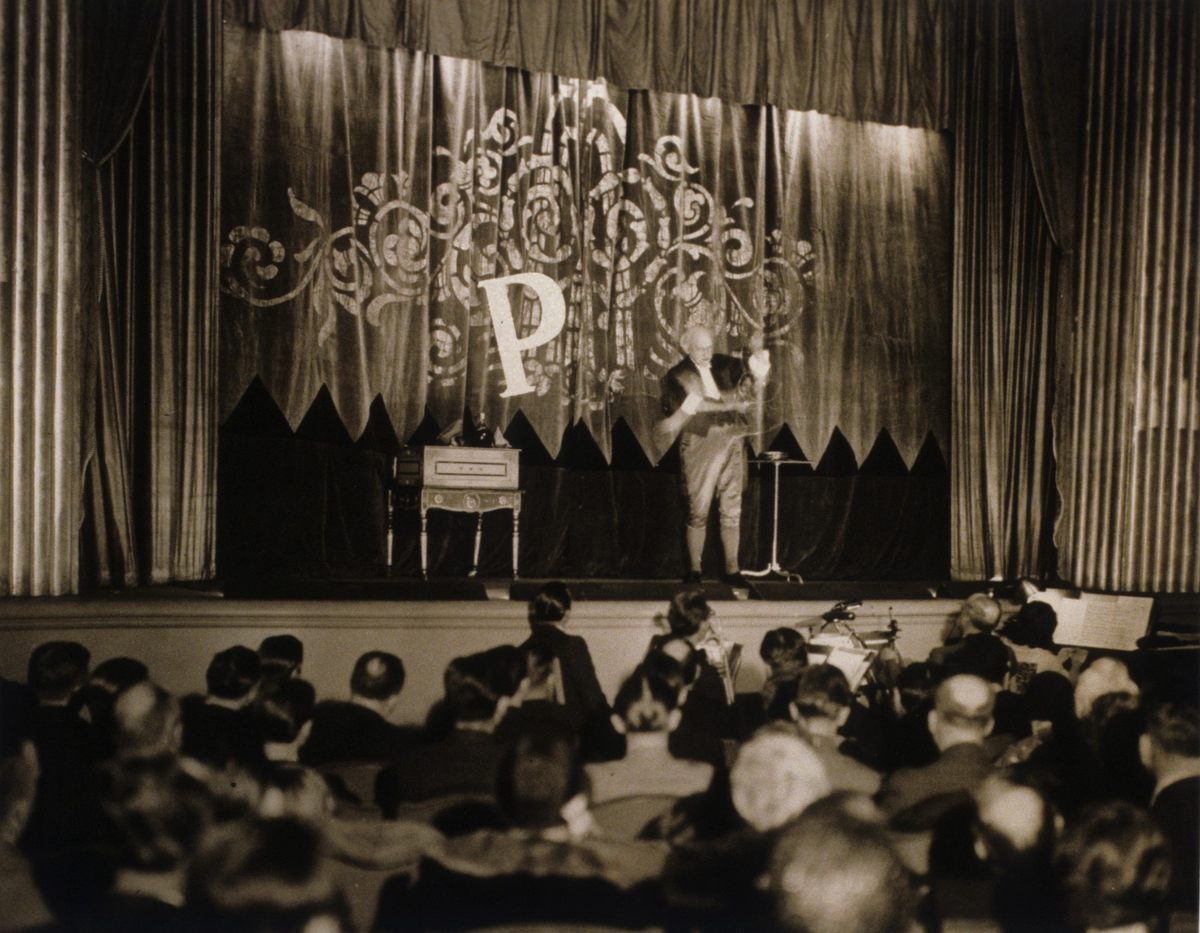
Steeped as it is in oral history, magic is full of legends, and when Levine first came here, he didn’t quite believe the story that the Flosso-Hornmann Magic Shop had once been located in the same building. But then one day a long-time building employee asked him if Jackie—Flosso’s son, who took over the business—was still around. The old elevator operator once asked Blumenthal about it, too. That store had its own mythology: two counters against a white wall, piled with magic stuff and navigable only by the employees, who decided what you needed when you visited. Blumenthal worked out that it must have closed just a few years before Tannen’s moved in. Today the spot where it was located is a blank wall, right next to Tannen’s.
Levine designed his afterhours show specifically for Tannen’s, and he imagined the first half would be the best version of what it can be like to visit a magic shop. In the second half, after he whisks away the magic books, he gathers the audience around the black table in the center of the room, to give, he says, a sense of what it’s like to be in the back room. He talks about Vernon and a trick in which he scattered a deck of cards off a boat and into the water. Only one card landed face up—the one that Vernon had chosen. Levine then explains the holy grail of backroom magic—to make a card appear without touching the deck. As he speaks, he makes no mention of what his hands are doing—moving cards around the table with a pen alone.
At the end of the night, he performs a version of “any card at any number.” An audience member thinks of a card, and Levine asks another to pick a number—31, in this case—and then he counts down as he deals cards from the deck. He turns over the 31st card, and the audience member assents: That’s the card. We may not know what the secret is behind the trick, or any of the amazing things that magicians can do today, absent theatricality and a dedicated stage, but we know exactly where to find it: somewhere in the back room.

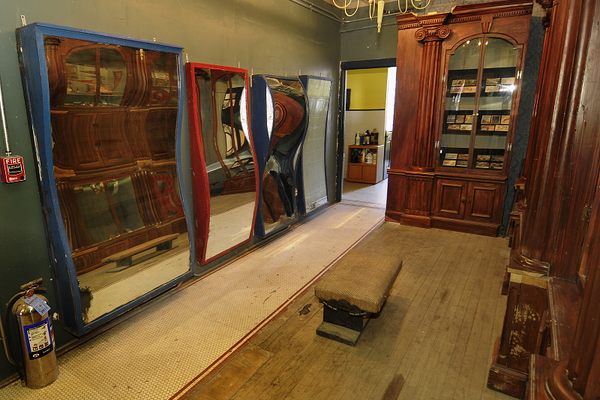
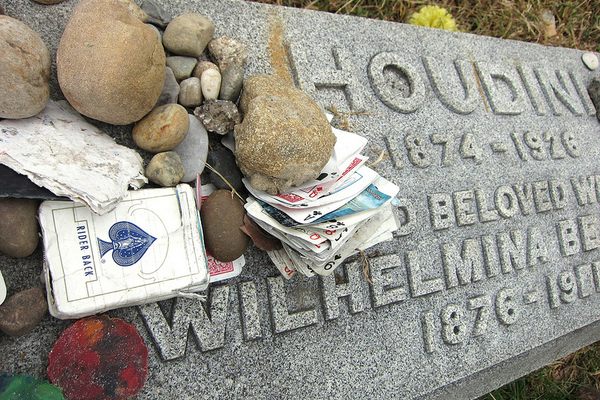


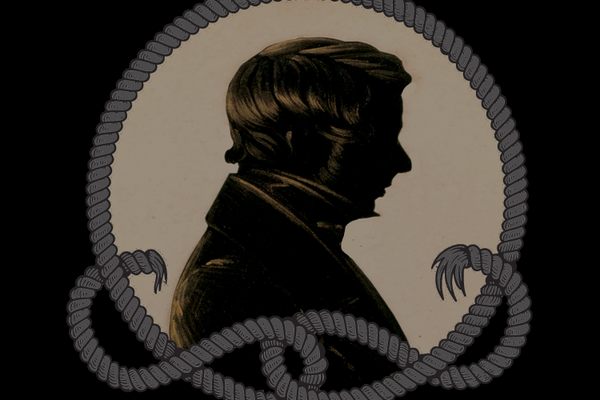
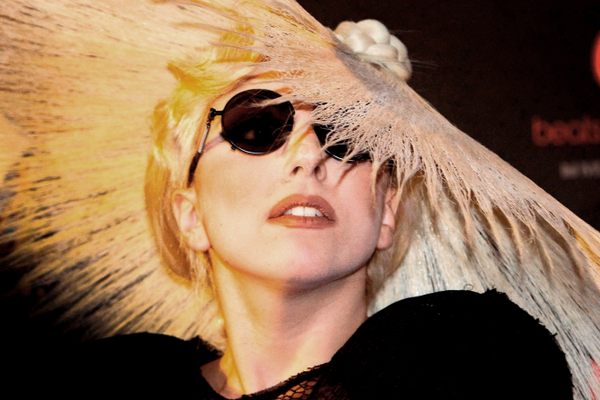

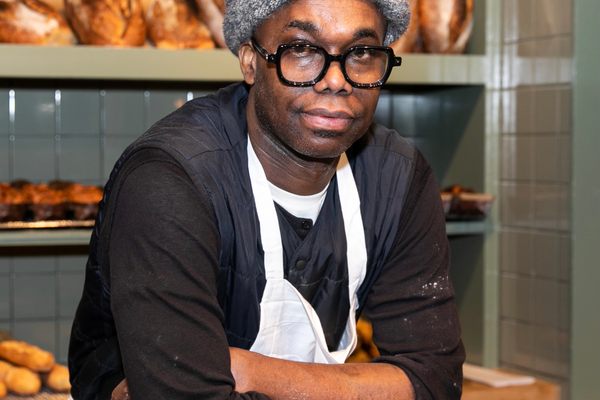





Follow us on Twitter to get the latest on the world's hidden wonders.
Like us on Facebook to get the latest on the world's hidden wonders.
Follow us on Twitter Like us on Facebook